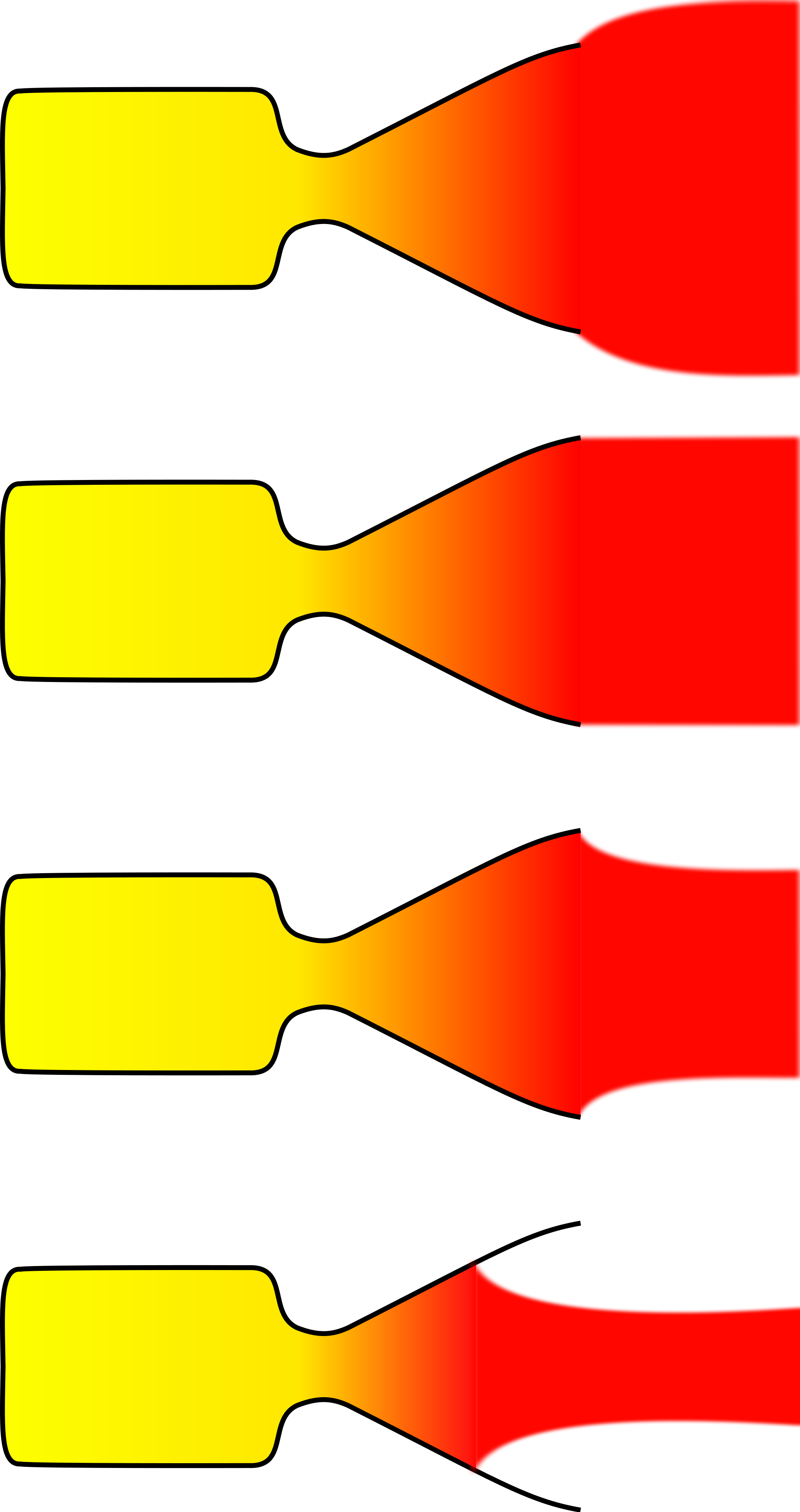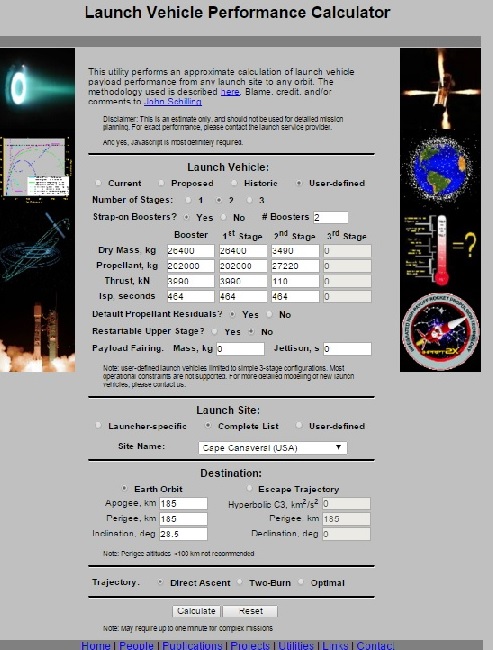Copyright 2016 Robert Clark
Blue Origin scored another first by successfully relaunching their vertical landing New Shepard suborbital rocket:
In the blog post "Triple Cored New Shepard as an orbital vehicle", I suggested using three cores of the New Shepard rocket with a small upper stage could form an orbital launcher. However Jonathan Goff on his blog page SelenianBoondocks raised the possibility a single New Shepard could serve as the first stage booster of an orbital rocket:
http://selenianboondocks.com/2016/01/random-thoughts-new-shepard-for-pop-up-tsto-nanosat-launch/
I think it should be doable using a similar small cryogenic upper stage as for the triple-cored case. The stage I suggested there was the cryogenic upper stage of the Ariane 4, the Ariane H10-3, or one developed by Blue Origin similar to it. It had a dry mass of 1,240 kg and a propellant mass of 11,860 kg. The Isp was 445 s with a vacuum thrust of 64.8 kN. However, simply using a nozzle extension as on the RL-10B-2 can give it likewise an Isp of 462 s and vacuum thrust of 110 kN. So we'll use these values.
To make the estimate of the payload we need the vacuum values for the Isp and thrust of the BE-3 engine. In the "Triple Cored New Shepard as an orbital vehicle" blog post I estimated these to be 360 s and 568.8 kN respectively.
However, to loft the vehicle with the additional weight of the upper stage we'll need to increase the BE-3 thrust slightly. This should doable. For instance the SSME’s could operate at 109% of their originally rated thrust, and the Merlin 1D had a 15% thrust upgrade. So say the BE-3 vacuum thrust is increased 9% to 620 kN, keeping the same Isp.
Now use Dr. John Schilling's payload estimator program. For the "Restartable upper stage" option check "No", otherwise the payload will be reduced. Select Cape Canaveral as the launch site and enter 28.5 for the launch inclination in degrees to match the latitude of the launch site. Then the calculator gives the result:
| Launch Vehicle: | User-Defined Launch Vehicle |
|---|---|
| Launch Site: | Cape Canaveral / KSC |
| Destination Orbit: | 185 x 185 km, 28 deg |
| Estimated Payload: | 1690 kg |
| 95% Confidence Interval: | 1298 - 2153 kg |
"Payload" refers to complete payload system weight, including any necessary payload attachment fittings or multiple payload adapters
This is an estimate based on the best publicly-available engineering and performance data, and should not be used for detailed mission planning. Operational constraints may reduce performance or preclude this mission.
Altitude Compensation to Increase Payload.
As I discussed in the "Triple Cored New Shepard as an orbital vehicle" blog post, altitude compensation provides a simple, low cost method of improving payload. For instance by attaching a nozzle extension the vacuum Isp of the BE-3 can be increased to the 462 s range of the RL-10B-2 engine. The vacuum thrust will then be increased proportionally to (462/360)*620 = 796 kN.
Then the Schilling calculator gives the result:
"Payload" refers to complete payload system weight, including any necessary payload attachment fittings or multiple payload adapters
This is an estimate based on the best publicly-available engineering and performance data, and should not be used for detailed mission planning. Operational constraints may reduce performance or preclude this mission.
Bob Clark
UPDATE, Feb. 28, 2016:
This considered an Ariane hydrolox upper stage as the upper stage for this New Shepard launcher. This would be problematical since it would be a direct competitor to Arianespace's Vega rocket at a much lower cost than the Vega's $35 million.
Blue Origin very likely could develop a hydrolox upper stage that would be cheaper than the Ariane one. But that would take time and significant development cost. Instead of that, Blue Origin could produce a New Shepard derived launcher for cubesats at minimal extra development cost since the required small upper stages already exist.
Existing upper stages that could work would be the large Star solid rocket upper stages such as the Star 63F:
Star 63F:
http://www.astronautix.com/engines/star63f.htm
Using this for the upper stage, Schillings launch performance calculator gives:
This is in the range being considered for the cubesat launchers that NASA has already awarded million dollar contracts to:
Firefly, Rocket Lab and Virgin Galactic Win CubeSat Launch Contracts from NASA.
By Caleb Henry | October 15, 2015 | Feature, Government, Launch, North America, Regional, Satellite TODAY News Feed
http://www.satellitetoday.com/launch/2015/10/15/firefly-rocket-lab-and-virgin-galactic-win-cubesat-launch-contracts-from-nasa/
Considering the quoted prices there, this New Shepard based launcher very likely could beat these prices especially using the reusable New Shepard.
And since the upper stage already exists, it very likely would also beat to launch these other systems still in development.
About the quick route to operational status of this orbital rocket, I think it is significant that Blue Origin was able to beat SpaceX on a relaunch of its returned booster. The argument has been made that New Shepard is not an orbital launcher. But if Blue Origin developed this orbital launcher from New Shepard then they would be able to beat SpaceX at reusing a booster for a true orbital launcher as well.
My opinion is SpaceX will have difficulty with getting their booster to land in reliable fashion as long as it does not have hovering ability. And because the New Shepard does have hovering ability it will be more reliable as a reusable booster.
BTW, as Blue Origin develops its large high performance dense propellant engines, it will have the same problem as SpaceX it getting its booster to be able to hover, resulting in the same problem of reduced reliability on landing. For this reason I think Blue Origin should investigate methods of giving its large planned boosters hovering ability such as discussed here:
Hovering capability for the reusable Falcon 9, page 3: hovering ability can increase the payload of a RLV.
http://exoscientist.blogspot.com/2015/12/hovering-capability-for-reusable-falcon.html
Surprisingly, it turns out that hovering ability when properly implemented can actually improve the the payload for a reusable rocket.
As I discussed in the "Triple Cored New Shepard as an orbital vehicle" blog post, altitude compensation provides a simple, low cost method of improving payload. For instance by attaching a nozzle extension the vacuum Isp of the BE-3 can be increased to the 462 s range of the RL-10B-2 engine. The vacuum thrust will then be increased proportionally to (462/360)*620 = 796 kN.
Then the Schilling calculator gives the result:
| Launch Vehicle: | User-Defined Launch Vehicle |
|---|---|
| Launch Site: | Cape Canaveral / KSC |
| Destination Orbit: | 185 x 185 km, 28 deg |
| Estimated Payload: | 2324 kg |
| 95% Confidence Interval: | 1841 - 2895 kg |
"Payload" refers to complete payload system weight, including any necessary payload attachment fittings or multiple payload adapters
This is an estimate based on the best publicly-available engineering and performance data, and should not be used for detailed mission planning. Operational constraints may reduce performance or preclude this mission.
Bob Clark
UPDATE, Feb. 28, 2016:
This considered an Ariane hydrolox upper stage as the upper stage for this New Shepard launcher. This would be problematical since it would be a direct competitor to Arianespace's Vega rocket at a much lower cost than the Vega's $35 million.
Blue Origin very likely could develop a hydrolox upper stage that would be cheaper than the Ariane one. But that would take time and significant development cost. Instead of that, Blue Origin could produce a New Shepard derived launcher for cubesats at minimal extra development cost since the required small upper stages already exist.
Existing upper stages that could work would be the large Star solid rocket upper stages such as the Star 63F:
Star 63F:
http://www.astronautix.com/engines/star63f.htm
Using this for the upper stage, Schillings launch performance calculator gives:
| Launch Vehicle: | User-Defined Launch Vehicle |
|---|---|
| Launch Site: | Cape Canaveral / KSC |
| Destination Orbit: | 185 x 185 km, 28 deg |
| Estimated Payload: | 293 kg |
| 95% Confidence Interval: | 174 - 443 kg |
This is in the range being considered for the cubesat launchers that NASA has already awarded million dollar contracts to:
Firefly, Rocket Lab and Virgin Galactic Win CubeSat Launch Contracts from NASA.
By Caleb Henry | October 15, 2015 | Feature, Government, Launch, North America, Regional, Satellite TODAY News Feed
http://www.satellitetoday.com/launch/2015/10/15/firefly-rocket-lab-and-virgin-galactic-win-cubesat-launch-contracts-from-nasa/
Considering the quoted prices there, this New Shepard based launcher very likely could beat these prices especially using the reusable New Shepard.
And since the upper stage already exists, it very likely would also beat to launch these other systems still in development.
About the quick route to operational status of this orbital rocket, I think it is significant that Blue Origin was able to beat SpaceX on a relaunch of its returned booster. The argument has been made that New Shepard is not an orbital launcher. But if Blue Origin developed this orbital launcher from New Shepard then they would be able to beat SpaceX at reusing a booster for a true orbital launcher as well.
My opinion is SpaceX will have difficulty with getting their booster to land in reliable fashion as long as it does not have hovering ability. And because the New Shepard does have hovering ability it will be more reliable as a reusable booster.
BTW, as Blue Origin develops its large high performance dense propellant engines, it will have the same problem as SpaceX it getting its booster to be able to hover, resulting in the same problem of reduced reliability on landing. For this reason I think Blue Origin should investigate methods of giving its large planned boosters hovering ability such as discussed here:
Hovering capability for the reusable Falcon 9, page 3: hovering ability can increase the payload of a RLV.
http://exoscientist.blogspot.com/2015/12/hovering-capability-for-reusable-falcon.html
Surprisingly, it turns out that hovering ability when properly implemented can actually improve the the payload for a reusable rocket.









